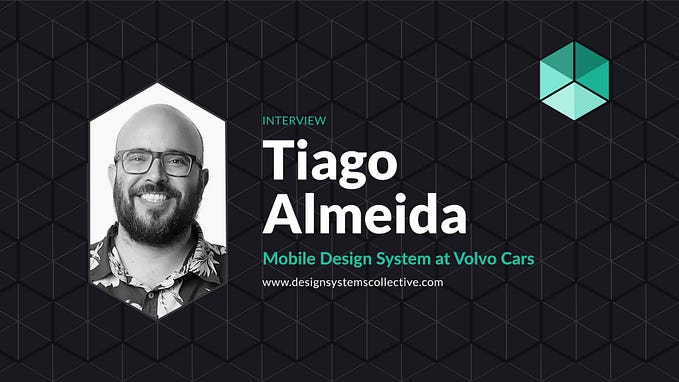Why we should all care about inclusive design?
It’s ‘normal’ to be ‘disabled’
Almost by chance some weeks ago I noticed that there is an annual event here in Europe that is called Inclusion Week. This event takes place from 27th September to 3rd October and is designed to celebrate everyday inclusion in all its forms.
This unexpected event inspired me to ask myself what inclusion means to me and more specifically what inclusive design means. So I started with pretty extensive research on the field to end up with this article where I compile what to me were some of the most relevant perspectives I found about inclusive design.
Starting with..what is inclusive design?
As designers, we need to understand that every design decision we make has the potential to include or exclude end-customers.
Inclusive design emphasizes the idea of understanding user diversity and welcoming diverse people to engage authentically with your product, service or even with your organization. It considers cultural, social and other needs not only for the ‘average’ or ‘typical’ user but to the ‘edge’ user groups not considered as ‘normal’ or ‘average’.
According to Microsoft inclusive design is “a method that enables and draws on a full range of human diversity. Most importantly, this means including and learning from people with a range of perspectives”.
What inclusive design IS NOT?
Inclusive design is not doing one thing for all people as Susan Goltsman, design leader at Microsoft, explains:
“Inclusive design doesn’t mean you’re designing one thing for all people. You’re designing a diversity of ways to participate so that everyone has a sense of belonging”
Are Inclusive design & accessibility the same thing?
Before starting this research if you asked me what inclusive design was I would have responded with something related to the concept of accessibility. This response would have been right & wrong at the same time. Let me explain to you why.
Accessibility is an attribute of Inclusive design that could be defined as a set of standards to achieve. It primarily takes into account making an equivalent experience in physical or digital space for those with disabilities, usually through accommodations like keyboard navigation, captions, and many other methods.
On the other side inclusive design focuses on needs, perspectives, and behaviors, rather than solely creating accommodations for specific disabilities. Inclusive design includes identities, culture, and diverse perspectives in a design process of research and co-design. Accessibility doesn’t necessarily take into account different identities, cultures, or perspectives, and focuses more on adapting content to support different modes of interaction and engagement.
Guess what? At some point, we are all disabled
Another thing that I was thinking before this research was that my disabilities will come (if I was lucky enough) in like 30 to 40 years when I grow old…well…keep reading…
In 1980 the World Health Organization defines disability as a personal attribute
“In the context of health experience, a disability is any restriction or lack of ability (resulting from an impairment) to perform an activity in the manner or within the range considered normal for a human being.”
Today the same organization defined disability as context dependent
“Disability is not just a health problem. It is a complex phenomenon, reflecting the interaction between features of a person’s body and features of the society in which he or she lives.”
So according to this last definition…
If disability is context-dependent, then at some point we are all disabled as the context is always affecting our day-to-day life. For example, if you have experienced life with an arm injury due to the amount of time you are exposed to a keyboard then you will know how quickly you have to learn to do things with one hand. Similarly, if you are in a crowded metro listening to your favorite singer, you might just benefit from a design that has been optimized for noisy environments.
Take a look at the image below and think if you were or if you could be in any of these situations.
If you can relate to any of these pictograms then you could experience some kind of disability sooner or later. Having this in mind, it might sound like a good idea to start thinking about this perspective in your design process.
The polarised view of ‘able-bodied’ and ‘disabled’ doesn’t work anymore.
Before the context-dependent definition of disability, population diversity accepted the perspective of ability variation, but when the context perspective was included then the diversity was associated also with different real-world contexts, context-situations, culture and gender.
To be honest before this research my idea of someone with difficulties to interact with a product or service would be someone in a wheelchair or completely blind, well I guess I was completely wrong.
Diversity within the population is better modeled using a pyramid to model the full range of ability variation within a population. This pyramid can then be segmented to identify various categories of users. The bottom segment of the pyramid represents those with no difficulties, and the severity of difficulties increases up the pyramid.
Looking at this graph makes me think that the perspective I used to have about disability is now quite naive.
Inclusive design, in practice
I hope you have now a clear understanding of what inclusive design is and also understand that at some point we are or we will be disabled someday so now the idea is to give you some guiding principles that you can use as starting point to challenge your designs and see if you are including the inclusive design perspective or not. Remember also that inclusive design is not only about people with disabilities but also considers other dimensions of human difference such as culture and gender.
There’s no official list for creating inclusive designs but I think this one from Wix.com is really practical & hands-on. This is not a list you should follow in each and every design you are working on because not all the projects will allow you to but at least is something you should keep in mind when you start making your design choices.
Provide content in multiple ways
Make sure that your key UI elements of your interface can be experienced in more than one way. This doesn’t mean you need to provide text to speech options in every form but make sure that during your design research you ask to the corresponding stakeholders if there’s any user segment that could have problems to digest content in the ‘standard’ way. Please notice that your stakeholders will have their bias about disabilities so I encourage you to talk about all the context-related disabilities that users could have.
Design with various situations in mind
If you are working in a B2C context then it’s likely that your users will be browsing your product in a variety of different contexts, and your interface should accommodate that range of circumstances. For example, let’s imagine you are working in a e-shop, would it be the same experience if your user wants to buy something when they are at home than travelling in the metro? If the answer is no then you need to sit with your stakeholders and talk about the different contexts that your user may experience to then design accordingly.
Maintain consistency and design conventions
When consistency is present in your design, people can transfer knowledge to new contexts and learn new things quickly without pain. This way they can focus on executing the task and not learning how the product UI works every time they switch the context. Remember it’s not about you, it’s about making user’s life easier.
Create a simple and intuitive design
Basically make it simple, do not overcomplicate things that are actually not that complicated. Check out the web & mobile standards before starting your design process. Again, it’s not about you, it’s not about how creative you are. Inclusive design shouldn’t contradict good design. On the contrary, it can help refine it.
Collaborate to overcome personal biases (to me the most important one)
To me this is the key one, again is not about you and and what you think. Inclusive design is part of the human-centered design approach. So put the users in the center of your decisions, ask your stakeholders what are their user segments, not only the ‘average’ users but those who are more ‘edgy’ provide solutions to them by understanding their context and how they can interact with whatever you are designing. This sort of collaboration leads to unique insights about the product and its pain points.
Allow tolerance for user error
We are all humans and we all make mistakes. Leaving room for user error means offering the chance for users to change their minds and correct their mistakes. This way, users can enjoy the benefit of knowing that their actions are never irreversible. If that is not possible and the action has to be irreversible then the users needs to be somehow advise about the consequence of their actions.
Test and measure
Like any other part of the design process, the inclusivity of our products should also be checked and tested. Integrate inclusivity as one of the parameters to look into at all stages of the product development, from the UX prototyping, to the user interviews and usability testing.
One last thing…
Remember this, if disability happens at the points of interaction between a person and the society he/she lives in then we as designers of those interactions (apps, services, physical products, buildings, etc.) need to understand how our decisions affects these interactions and create mismatches. We need to care for each-other and try to include this perspective as much as possible in our design process because you never know when we are excluding someone else.
Thank you for reading ❤️
References:
- https://www.microsoft.com/design/inclusive/
- http://www.inclusivedesigntoolkit.com/whatis/whatis.html#nogo
- https://legacy.idrc.ocadu.ca/about-the-idrc/49-resources/online-resources/articles-and-papers/443-whatisinclusivedesign
- https://sayyeah.com/digital-insights/universal-design-accessibility-inclusive-design/
- https://www.designcouncil.org.uk/sites/default/files/asset/document/the-principles-of-inclusive-design.pdf
- https://www.wix.com/blog/creative/2020/02/inclusive-design/







